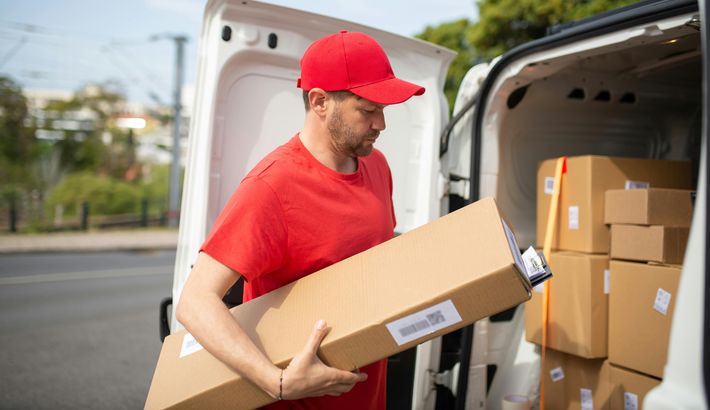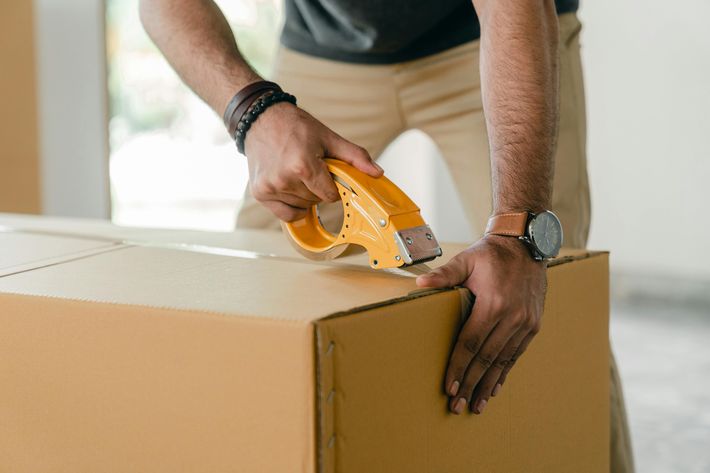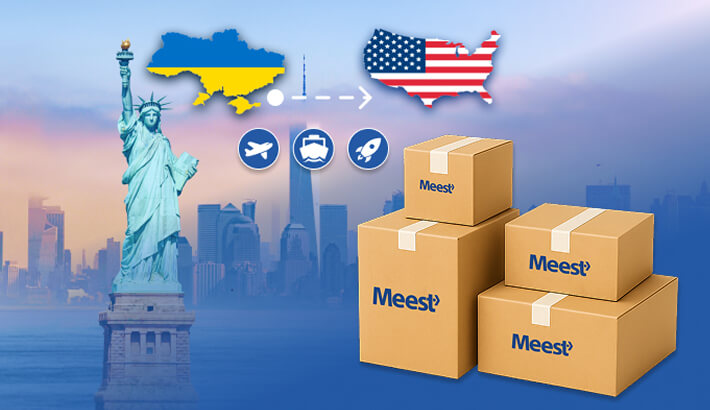


How to Ship a Firearm
Getting firearms into the United States isn’t simple — it’s a complex process with lots of rules. The process of shipping guns and other restricted items safely and legally is regulated by a combination of federal, state, and freight regulations.
Knowing how to ship a firearm can’t be overstated. No matter whether it’s one person sending a pistol or a business moving rifles and shotguns, understanding how the couriering process works changes everything. When you know the rules, you save time. You also avoid stress. And you keep things 100 % legit.
Sending pieces is not like regular freight packages. Each shipment of a gun requires a valid license, proper document verification, and coordination with reputable carriers. By grasping these rules, you can steer clear of violations, delays, and fines.
The goal of this article is to explain the legal requirements in plain language. There is no jargon or fluff — only the facts. However, remember that following the rules is only part of the bigger picture. The article breaks down each step of the shipping process along the way. It also emphasizes the most important safety checks and best practices. This knowledge will not only keep you on the right side of the law, but will also ensure the secure and confident couriering of weapons.
An Important Notice: Meest's Firearm & Ammunition Shipping Policy
Attention: Firearms, gun components, and ammunition are not accepted for shipping with Meest. Be sure to follow this policy when planning your package. You must also take them into account when assembling the freight box.
This policy is designed to protect employees and comply with complex federal and state regulations. Not sending pieces allows the company to focus on delivering high-quality goods across a wide range of products.
Meest provides reliable and secure freight. This is true for the following categories: personal packages; electronics; clothing; gifts; commercial cargo.
For your peace of mind, all shipments are professionally packaged, insured, and tracked. This guarantees that customers enjoy convenience, safety, and comfort.
Disclaimer! This guide is for informational purposes only and does not constitute legal advice. To ship firearms, you must use licensed professionals and strictly adhere to ATF and federal law.
Shipping guns requires increased responsibility. One wrong move with the regulations, and the allowed consequences can be severe. This approach lets Meest dodge the risks of restricted shipments and ensures the safety of everything else moving through its network.
Adhering to regulations also safeguards customers from potential issues with carriers. The U.S. Postal Service strictly prohibits freight guns, and major courier companies such as FedEx and UPS only permit licensed shippers to ship them.
Understanding whether can you ship guns through regular couriering channels without a license is crucial for both legal compliance and safe delivery. Therefore, it is essential to familiarize yourself with all the intricacies, nuances, and legit aspects to avoid any unpleasant situations.
The Key Legal Requirements You Must Know

Shipping pieces within the United States is subject to strict requirements. The most important name in this area is the Bureau of Alcohol, Tobacco, Firearms, and Explosives (ATF). This federal agency establishes the basic regulations governing the manufacture, sale, and transfer of pieces. The ATF specifies who can act as a dealer or licensee and what documents are required for a legal gun transfer.
Another key concept is the Federal Firearms License. An FFL is the status of a dealer, gunsmith, or manufacturer that allows them to sell and transfer weapons legally.
Interstate gun shipments most often require both the sender and recipient to work through FFL holders. These are individuals or entities licensed by the ATF to engage in the business of selling firearms. The law also strictly regulates restricted items, including ammo, specific parts, and modified components. Ammunition shipments require special attention.
Any error in the declaration can result in a delay, fine, or seizure of the shipment. Therefore, you must carefully review this matter and strictly adhere to all legal requirements. This will ensure the delivery of such a specialized shipment without any problems from local authorities and the law.
A brief overview of the most essential allowed requirements:
- The ATF establishes a framework for control and requires compliance with regulations for the sale and transfer of guns.
- An FFL is required for most interstate transfers; private-to-private shipments across state lines without an FFL are generally prohibited.
- Carriers set their own rules: some airlines permit the shipping of firearms only if specific packaging, declaration, and documentation requirements are met.
- Ammunition and parts are subject to separate regulations and often require special packaging and labeling.
- Confirmation that the piece is secure, unloaded, and that the paperwork is correctly completed is always required.
Finally, background checks are worth mentioning. The point is that when purchasing and transferring a vehicle through a dealer, a context verification is usually performed. This step is part of the overall security system. Failure to perform the required checks or failure to comply with legal requirements can result in criminal liability.
How to Ship Different Types of Firearms (Using Approved Carriers)
The rules for shipping a firearm depend primarily on its type. The difference between a handgun and a rifle or shotgun is of practical importance when choosing a carrier and freight method. Here, you need to understand the specifics and differences to comprehend what is and isn't allowed, as well as how to handle everything correctly.
Shipping Handguns — Pistols and Revolvers
Short-barreled guns are subject to strict regulations. In most cases, unlicensed individuals cannot ship handguns via regular mail. To answer the question of how to ship a gun, private shippers are generally advised to work through an FFL holder.
A licensed dealer handles the transfer, prepares the paperwork, and, if necessary, conducts a background check. In this case, the shipment will be completely allowed, and the package will be safely delivered to the specified address.
Validated couriers and carriers require that handguns be shipped via express service and accompanied by the correct documentation. Requirements include:
- secure packaging;
- securely securing the gun in the box;
- lack of ammunition;
- declaration of contents;
- shipment insurance (in individual cases).
When couriering a pistol, ground or priority freight is often preferred, as specified by the carrier.
Shipping Long Guns — Rifles and Shotguns
For long guns, such as rifles or shotguns, the regulations regarding sending methods are sometimes more relaxed. However, legal requirements remain. Interstate shipments typically require the participation of FFL holders.
Large carriers allow ground shipping of long guns. This makes the process more affordable. The primary concern is to adhere to the packaging, labeling, and documentation guidelines.
The typical process for freight a firearm (such as a rifle) through an approved carrier is as follows:
- Prepare the gun. Ensure it is unloaded, securely packed, and secured.
- Paperwork. Indicate on the declaration who the sender and recipient are, and whether the recipient has a valid FFL license.
- Carrier Selection. Use only carriers that allow this operation and provide the necessary documentation.
- FFL Transfer. Transfer the gun to a licensed dealer for final shipment.
- Tracking and Insurance. Enable monitoring and insurance to protect against loss or damage.
This approach will ensure that your specific package is delivered safely and promptly to the specified address. The entire process will proceed without any problems or obstacles.
General Requirements for Carriers

Regardless of the type of piece, carriers must comply with several rules. If you want your weapon to be delivered on time, you must strictly adhere to them. Failure to comply with generally accepted rules can result in fines or even confiscation of the contents of the box. Requirements may include:
- only licensed senders and recipients for interstate transfers;
- the weapon must be unloaded and placed in secure packaging;
- mandatory declaration of contents and, if necessary, accompanying FFL documents;
- tracking and optional insurance are required;
- shipping via some mail services is prohibited, and air carriage is restricted for certain types of ammunition.
It's important to remember! The question "Can you ship a rifle?" has a definitive answer only if all these conditions are met. Couriering it without following these rules can lead to serious legal consequences.
Packaging plays a vital role in freight guns. It must serve two purposes: protect the contents and comply with carrier and allowed requirements. To avoid any questions, misunderstandings, or doubts at this stage, you can use the following best practices:
- Firearms must be completely unloaded, with all magazines removed and packed separately.
- Use a sturdy box with internal reinforcement to prevent the piece from moving.
- External markings should not directly indicate the contents for security reasons.
- Include all necessary paperwork in a separate inner bag that is accessible during inspection.
- Selecting insurance and tracking are standard recommendations for expensive items.
Comply with the law and carrier regulations. Only then can you ensure the successful delivery of a special shipment containing a weapon.
For All Your Other Shipping Needs, Trust Meest
While shipping firearms requires a specialized approach and the involvement of licensed dealers and carriers, Meest remains a reliable partner for most other couriering needs.
This international shipping company excels in customer service, offering clear rates, transparent policies, and high-quality logistics. For shippers who are unable to ship restricted items, Meest offers fast and affordable delivery options with detailed tracking and support at every stage.
Meest's turnkey international freight solutions simplify the couriering process. For customers seeking convenient delivery of gifts for loved ones or commercial cargo, Meest remains a top choice thanks to its combination of reliability and affordability.

















